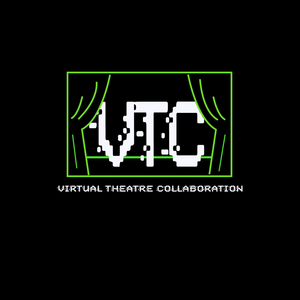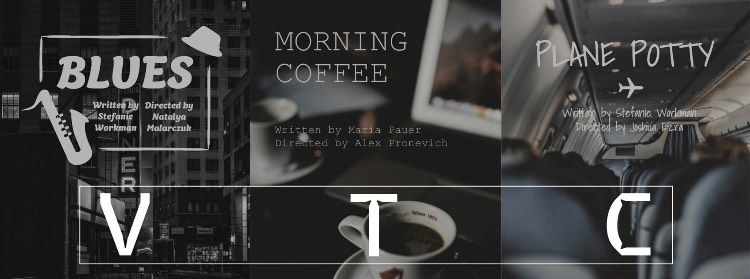BWW Blog: Creating Theatre in the Midst of a Pandemic

When the theatre students of SUNY New Paltz were told they would not be coming back to campus, all of us began to grieve. We had two more productions that had yet to be put on for the spring semester. Our Praxis production of "14" and our musical "Spring Awakening" had been canceled. Actors, directors, stage managers, technicians, and designers were filled with disappointment that these amazing shows were not going to be put on. However, in the midst of all this uncertainty and confusion, a few of my colleagues within the department decided to find a way to still do theatre despite being quarantined from each other. Thus Virtual Theatre Collaboration was created. Virtual Theatre Collaboration, or VTC for short, seeks to connect artists and audiences regardless of the platform, through digitally capturing original shows written by students, directed by students, performed by students, and designed by students. They want to make the process and presentation of these shows as close to real production as possible despite being isolated from one another. I had the absolute pleasure to speak with Dominique Torrez and Natalie Houle, the founders of Virtual Theatre Collaboration. We discussed their organization, the process of creating virtual theatre, and what is next for them.
When the pandemic occurred, many theatre artists turned to performing staged readings over Zoom or Webex. But the people from Virtual Theatre Collaboration took it a step further. During our conversation, Natalie commented that with these staged readings, the tech side of the theatre was not being represented. It wasn't only the actors that lost the chance to perform, but the designers and technicians who had to let go of their opportunity to execute the worlds of the two pieces. Dominique talked about how this project started with wanting to provide a space for all the students who lost their shows this semester. Everyone was grieving, and they wanted to do something to help our department through this unexpected change in all of our lives.
They had the idea, but the next step was getting it off the ground. The biggest question the founders faced was: "How close to normal can we produce a full production?" There was a whole lot of planning during this process on how they wanted Virtual Theatre Collaboration to work. Dominique and Nat told me that there were constant meetings between them. They also reached out to the professors at our school for advice on how to pull something like this off. Their main goal before presenting this to the public was to have all their bases covered: figure out all the possibilities, what could go wrong, and how they could translate this to the page.

Nat said the first season was intended for SUNY New Paltz students, especially those who were involved in productions due to the pandemic. They searched for scripts that would translate well to screen, focusing more on dialogue than action. The team settled on three pieces: "Blues" and "Plane Potty" written by Stefanie Workman, and "Morning Coffee" written by yours truly. When it came to producing these three shows, we treated it like a real production. The dramaturgs and designers, some of whom were filling these roles for the first time, had to create the set, lights, sound, costumes, make-up, and props for their given production. The designers had to focus on two different worlds when coming up with their designs for each production. One world was the imaginary play space which meant if this production was to be put on professionally and they had endless resources, for the costumes, set, makeup lights, and sound what would it look like? So, they developed the designs for this imaginary play space. Once they had that established, the designs for the second world were derived from that. This distilled world would be the world in which the actors would be filming their performance. These first designs were presented to the directors and the actors, which led to brainstorming sessions on how to convey these ideas with the materials they had at home. It took a lot of creativity but they were all up to the challenge.
Then, a video editor took the footage recorded of the show and edited it to fulfill the director's vision of the production. Everything was filmed in the actors' homes and the video editor put it all together. However, as Nat put it, they are still treating it as a play and not a movie. Throughout the process of the three productions, eventually all of them were posted on Virtual Theatre Collaborations Facebook page in a staggered fashion. Each production is accompanied by a series of interviews with the directors and designers of each show, and photos presenting the wonderful designs made for each production.
So now that this season is done, I asked Dominique and Nat what is next for them. Right now they are gearing up for the summer season and have received applications from students at New Paltz and across the globe. Dominique stated: "As long as this whole situation is unclear we are going step by step." A meeting, or in theatre terms a Post-Mortem was held to figure out what worked, what didn't, and how to improve. Both of them emphasized the need to form a better line of communication between themselves and those working on the shows. " Both of them are very much looking forward to the next step, having found joy in being a producer despite how hard the job is.
This is something entirely new and experimental. As Nat and Dominique mentioned, it is amazing to have people to experiment with us. They also talked about how wonderful it is that they can rely on each other during this new endeavor of theirs. Their eyes have been opened, and they are learning to appreciate other aspects of the theatre. One theme kept coming up over and over as I spoke with them: Communication. How communication is so important in a virtual theatre and in theatre in general. That in order to create something there needs to be open communication between the team. The theatre community, in general, is very tight-knit. For me and many others in our department, being separated from each other was hard. But Nat said something that really stuck out to me. "Somehow, although we are still isolated, we can still work on something and be connected to a community." I think it is amazing how Nat and Dominique were able to recreate that community for the theatre students at SUNY New Paltz, and hopefully for others in the upcoming season.
If you want to check out Virtual Theatre Collaboration, go to their Facebook page, by clicking HERE. Look at the wonderful designs, watch the amazing shows they put on, and if you want to get involved then message them! They are truly a wonderful group of people who are looking to provide theatre in a time of strife.
Comments

Videos


